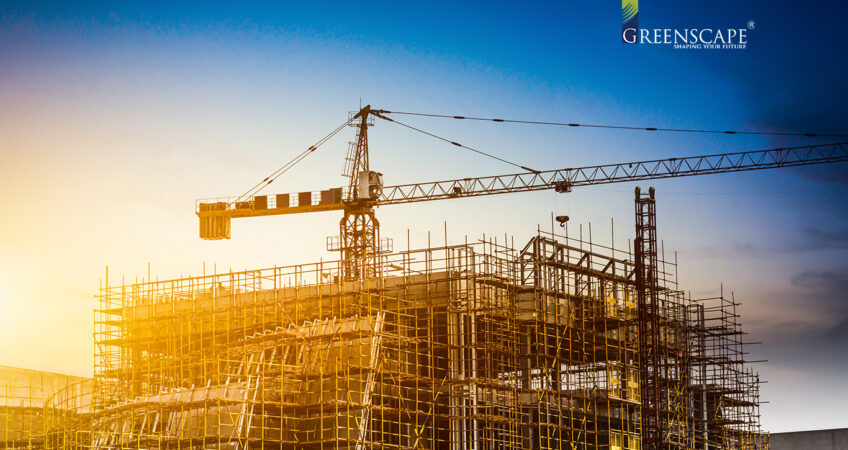6 steps of construction process

Living in the cities we are mostly acquainted with the high rises and new complexes emerging every day. Whenever we see a new building being constructed demolishing an old, dilapidated house or a good plot being put to use, we think of how another new project will be standing tall, with new residents residing in it within a few months. We think of big machines in use, labourers working day in and out to put out their best of efforts, engineers and architects planning the designs etc. It takes a great deal of planning and teamwork to successfully construct a new project.
Today in this post, let’s look at the steps involved in the construction process. Isn’t it interesting to know how things like making a skyscraper get done?
STEP 1: CONCEPTION OF THE PROJECT
The main goal is to create a comprehensive vision of a construction project. The first step begins with the conception stage where we start to plan our project, how it’s going to look and what needs it would cater to. The main takeaway from this step are:
- Determining the overall vision of the project to create a solid foundation.
- Master planning the entire design of the building and the way of action.
- Obtaining expert advice and insight which can pave the way for maximising the space and resources available.
STEP 2: TEAM AND DELIVERY METHODS TO SELECT
Selecting your team efficiently is a major decision as that will reap the outcomes of a successful project. The most successful projects emerge out of teams that understand the project goals and work hard to execute that vision. Building the project team can vary based on the project delivery method one selects. In a design-build team, the team generally features both as a construction firm as well as a design firm proposing for the project as a joint team, combining forces for the project, condensing both the firms into a convenient point of contract. Whereas in other cases, one needs to first select either an architect or a construction firm to join in as a team. I
STEP 3: DESIGNING:
The next phase is to conceptualise the vision of the project by designing construction documents into drawings and blueprints.
- Firstly the consideration of programming and feasibility depending on the building’s size and layout takes place.
- Then the schematic design of the project is prepared which provides a sense of what the building will look like.
- Going further the final sketches and costing is done.
- Each phase in these drawings includes intricate details to be debated and considered by the experts from time to time.
STEP 4: PRECONSTRUCTION AND PROCUREMENT PROCESS:
Planning the construction process deftly is the key to achieving a successfully constructed project.
- In this stage, creating a plan for building the project is the main focus.
- Dealing with budget schedules, other necessary factors are essential at this particular point.
- The team will develop the budget and analyse the project’s budget to enhance the value of the building with value engineering.
- Developing a schedule to plan all the required activities taking into account the logistic and phasing requirements.
- Creating a job site safety plan to establish communication methods to relay information between the team during the project’s construction tenure.
STEP 5: CONSTRUCTION:
The construction phase begins after all the planning. Generally, the project team, owner and other stakeholders come together to commemorate the project’s commencement with a groundbreaking ceremony.
- The construction team will be present on-site to manage the subcontractors and ensure that the work is being performed as per plan, keeping the site safe and the team right on schedule.
- The design team will perform quality inspections to make sure that the progress of the work matches the design.
- Hiring prospective employees who specialise in workplace safety, visiting the site regularly to ensure everyone is working safely all falls in this step.
STEP 6: WRAP UP:
When the construction of the building is completed with the fixtures being installed and the painting is completed, then the project closure commences.
- The construction team will wrap up the project’s punch list and make sure that the building has had its final touches, informing the owner about the equipment warranties, manuals and as-builts.
- A building inspector will then examine the building checking the electric wiring and connections, fire exits, plumbing and general constructions as a whole.
- And finally, the building will receive the go-ahead to go get sold to the potential buyers.
Did you enjoy this post? Let us know in the comments.



